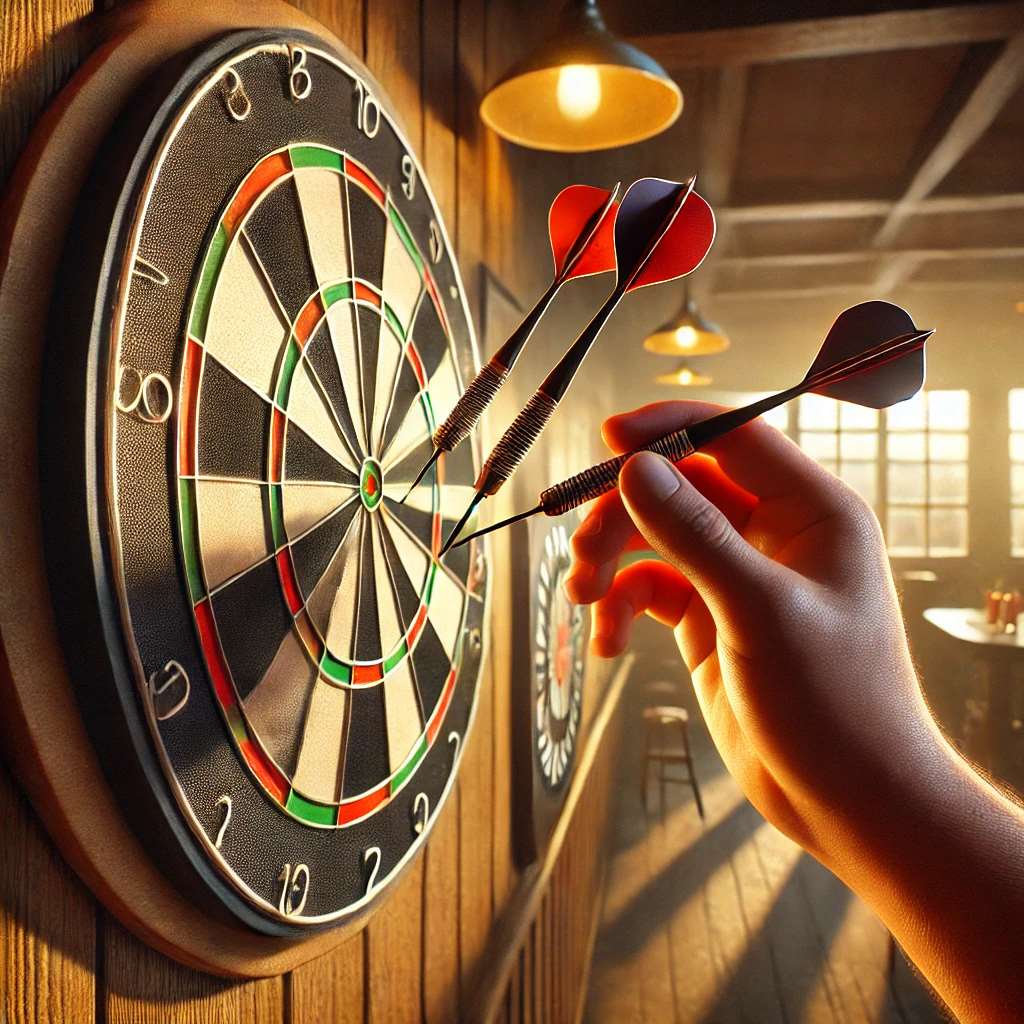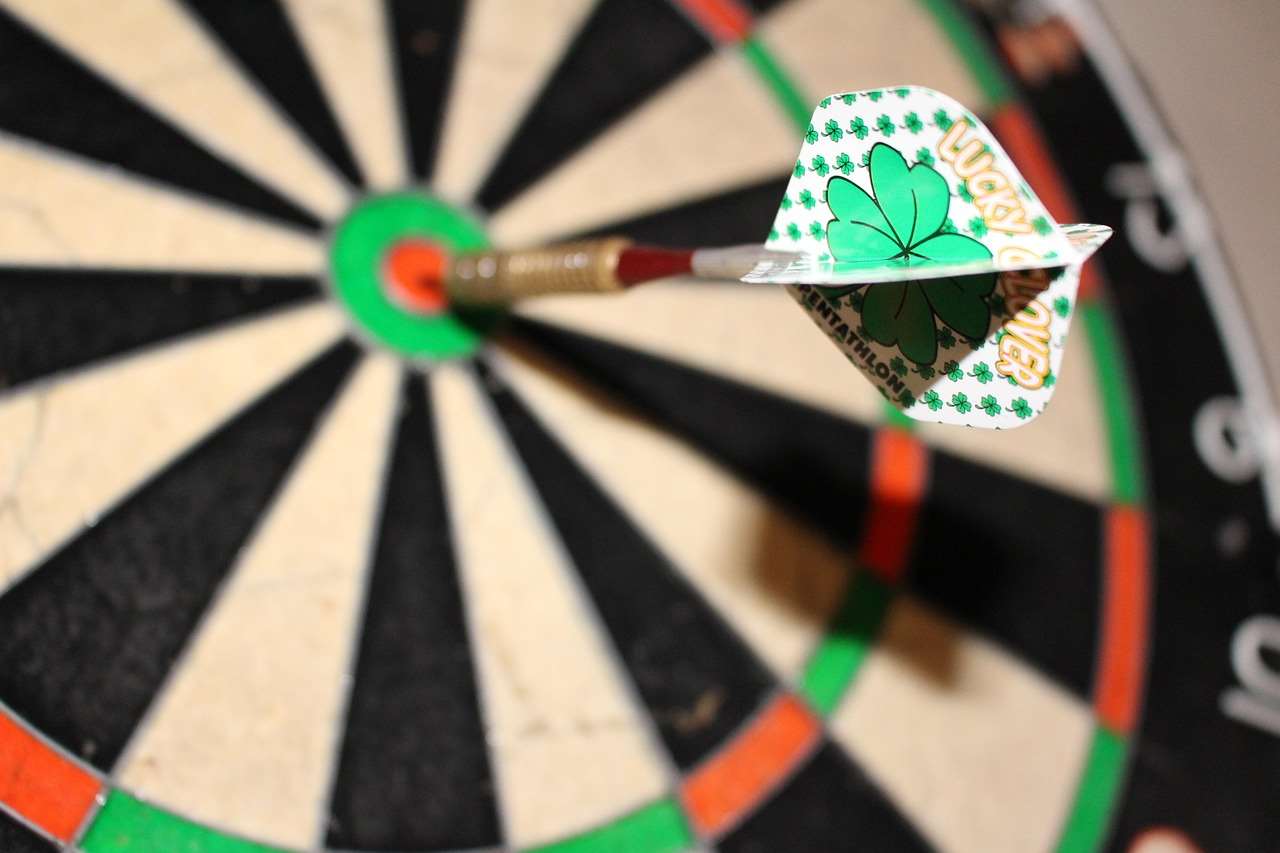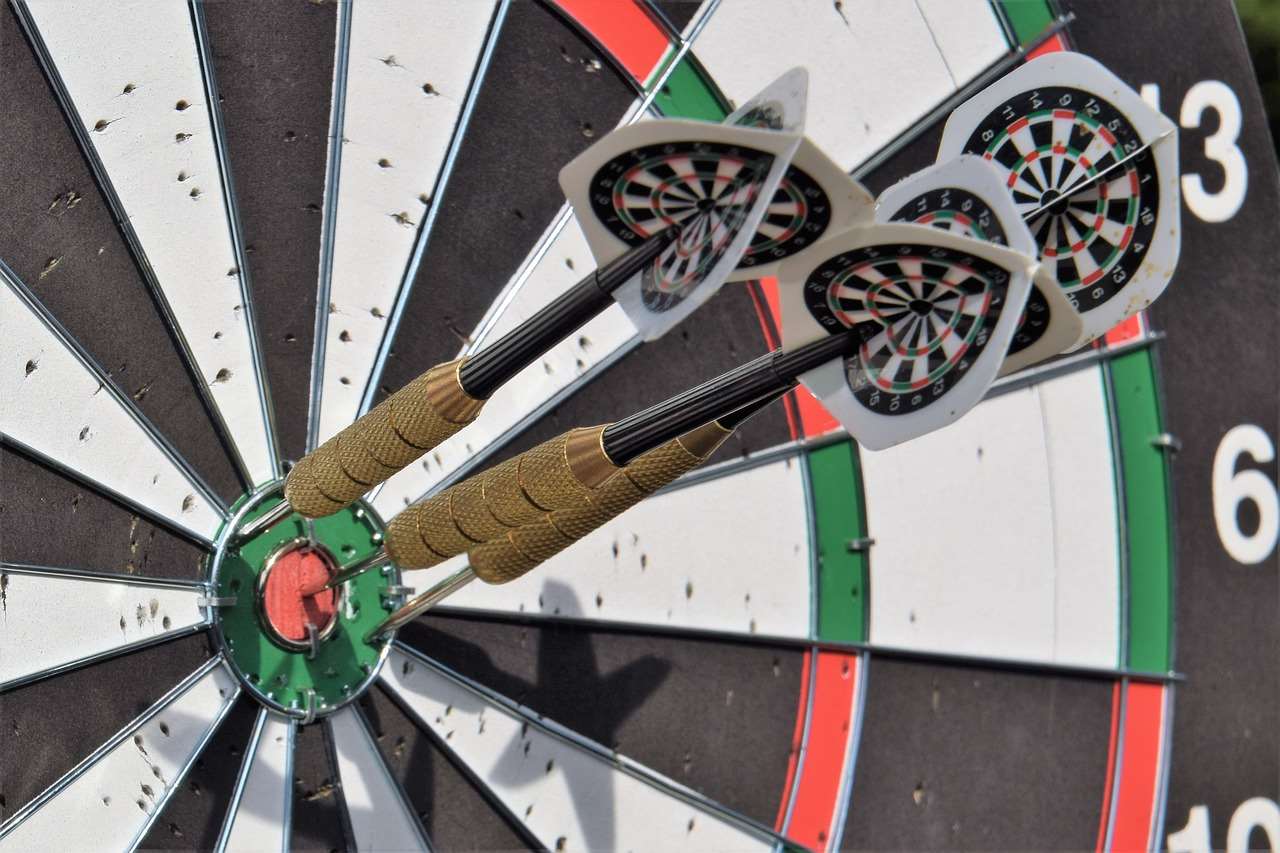Leveling the playing field is crucial for any successful charity darts tournament. Introducing a charity darts tournament handicap ensures that players of all skill levels have a fair shot at winning, boosting participation and overall enjoyment. This article explores how to implement effective handicap systems, maximizing the fun and fundraising potential of your event.
⚠️ Still Using Pen & Paper (Of een schoolbord)?! ⚠️
Stap in de toekomst! De Dart Teller -app behandelt alle scoren, stelt kassa voor, en volgt uw statistieken automatisch. It's easier than you think!
Probeer de Smart Dart Teller -app gratis!Klaar voor een upgrade? Klik hierboven!
Understanding the Need for a Charity Darts Tournament Handicap
In any darts competition, a wide range of skill levels is inevitable. Without a charity darts tournament handicap system, more experienced players will consistently dominate, potentially discouraging less skilled participants from joining or returning in the future. The primary goal of a handicap is to create a more equitable environment, providing a challenge for seasoned players while giving novices a fighting chance. This encourages participation, fosters camaraderie, and ultimately contributes to the success of your charitable cause. A well-designed handicap adds an element of unpredictability and excitement, making the tournament more engaging for both players and spectators.

Benefits of Implementing a Handicap System
- Increased Participation: Less-skilled players are more likely to participate if they believe they have a reasonable chance of winning.
- Enhanced Enjoyment: A fairer competition leads to a more enjoyable experience for everyone involved.
- Greater Fundraising Potential: Higher participation translates to more entry fees and increased donations.
- Improved Atmosphere: A balanced tournament fosters a more positive and inclusive atmosphere.
- Fair Competition: A handicap system levels the playing field and creates excitement in the tournament
Popular Charity Darts Tournament Handicap Methods
Several handicap methods can be employed in a charity darts tournament. The best choice depends on the number of participants, the range of skill levels, and the desired level of complexity. Here are some popular options:
Starting Score Adjustment
This is one of the simplest and most commonly used methods. Players are assigned a starting score based on their skill level, which is then deducted from the standard starting score (usually 501). Bijvoorbeeld, a highly skilled player might start at 501, while a beginner might start at 401. The exact score adjustment will depend on pre-tournament assessments.
Point-Per-Dart (PPD) Handicap
This method involves calculating a player’s average score per dart thrown in previous games or practice sessions. The difference between the average PPD of the strongest player and each other player is then used to award a handicap. Dit handicap could take the form of extra points or a reduction in the opponent’s score. Consider this when you make darts fairer with handicap rules.

“Spot the Difference” Handicap
Dit handicap involves giving a less skilled player a “spot” or an advantage. This could be in the form of allowing them to automatically win a leg if they reach a certain score first, or by giving them bonus points at the start of each leg. This method is particularly effective for tournaments with a wide disparity in skill levels. You may also want to check Basic Darts Fundamentals for Beginners.
Team Handicaps
If the tournament is played in teams, de handicap can be applied to the entire team based on the average skill level of its members. This is usually achieved by calculating a combined PPD or a weighted average of the individual handicaps. This ensures that teams are relatively balanced in terms of skill.
Target Score Handicap
In this system, weaker players are given a lower target score to reach in order to win a leg or game. Bijvoorbeeld, a strong player might need to checkout from 170, while a weaker player only needs to checkout from 100. This can make for exciting finishes, with the less-skilled player potentially achieving victory with a well-timed shot.
Determining Player Skill Levels for Handicapping
Accurately assessing player skill levels is crucial for implementing an effective charity darts tournament handicap. There are several methods you can use to gauge a player’s ability:
Self-Assessment
While not always the most accurate, asking players to self-assess their skill level can provide a starting point. You can use a simple questionnaire or rating scale to categorize players into different tiers (Bijv., beginner, intermediate, advanced). Echter, be aware that some players may overestimate or underestimate their abilities.
Preliminary Rounds or Qualifying Games
Organizing preliminary rounds or qualifying games allows you to observe players in action and assess their skill levels more objectively. This is particularly useful if you have a large number of participants and limited information about their abilities. Track scores and averages during these games to help determine appropriate handicaps.

Using Established League Averages (If Applicable)
If some of your participants are members of established darts leagues, you can use their league averages as a reliable indicator of their skill level. This data is usually readily available from league organizers and can provide a more accurate assessment than self-assessment or preliminary rounds.
Observation and Feedback from Experienced Players
Enlist the help of experienced darts players or coaches to observe participants during practice sessions or preliminary games. Their expertise can provide valuable insights into player abilities and help you fine-tune your handicap assignments. Make sure your referees or organizers are knowledgeable about Darts -regels aanpassen voor beginners.
Calculating the Handicap
Once you have determined the skill levels of your players, you need to calculate the specific handicap to be applied. This calculation will vary depending on the handicap method you have chosen. Here are some examples:
Starting Score Calculation
If you are using a starting score adjustment, you might assign players to different categories based on their skill level and then deduct a specific number of points from the standard starting score (501) for each category. Bijvoorbeeld:
- Advanced: Starting score = 501
- Intermediate: Starting score = 451
- Beginner: Starting score = 401
PPD Calculation
To calculate a PPD handicap, you first need to determine the average PPD of the highest-skilled player (Bijv., 30 PPD). Dan, for each other player, calculate the difference between their PPD and the highest PPD. This difference can then be used to award bonus points or deduct points from the opponent’s score.

Target Score Calculation
Decide on the target score or point deficit that less skilled players will be awarded. Bijvoorbeeld, if the strongest player must start and finish on a score of 501, an intermediate player could have a target score of 451. Beginners may play from 401 or even less. Set a good example by reviewing Simplified 501 game rules for novice players.
Rules and Regulations for Handicap Implementation
Clearly defining the rules and regulations surrounding the charity darts tournament handicap is essential for preventing confusion and ensuring fairness. These rules should be communicated to all participants before the tournament begins. Here are some key areas to address:
Handicap Assignment Process
Explain how player skill levels were assessed and how the handicaps were determined. Be transparent about the process and address any concerns or questions from participants.
Dispute Resolution
Establish a clear process for resolving disputes related to handicap assignments. This might involve a committee of experienced players or tournament organizers who can review the situation and make a fair decision.
Handicap Adjustments
Consider whether you will allow handicap adjustments during the tournament based on player performance. This can help to maintain a fair and competitive environment throughout the event, but it also adds complexity. If you have enough time, try some fun dart game variations with modified rules.
Transparency and Communication
Clearly communicate all rules and regulations related to the handicap system to all participants before the tournament begins. Use a written document or announcement to ensure that everyone is aware of the rules and has the opportunity to ask questions.

Promoting Your Charity Darts Tournament Handicap
Promote the fact that your charity darts tournament is using a handicap system. This can be a major draw for players who might otherwise be hesitant to participate. Highlight the benefits of the handicap in your promotional materials and emphasize the fair and inclusive nature of the event. Show how you’re adapting dart game rules for home play.
Conclusie
Implementing a charity darts tournament handicap is a vital step toward creating a successful and engaging event that benefits both participants and your chosen charity. By leveling the playing field and encouraging participation from players of all skill levels, you can maximize the fun, camaraderie, and fundraising potential of your tournament. Remember to choose a handicap method that suits your needs, accurately assess player skill levels, and clearly communicate the rules and regulations. With careful planning and execution, your handicapped charity darts tournament is sure to be a resounding success. Dus, get started planning your event today and see the difference a fair and inclusive tournament can make! Consider using this knowledge and starting a local or national league.
Hoi, Ik ben Dieter, En ik heb Dartcounter gemaakt (Dartcounterapp.com). Mijn motivatie was geen darts -expert - helemaal tegenovergestelde! Toen ik voor het eerst begon te spelen, Ik hield van het spel, maar vond het moeilijk en afleidend om nauwkeurige scores te houden en statistieken te volgen.
Ik dacht dat ik niet de enige kon zijn die hiermee worstelde. Dus, Ik besloot om een oplossing te bouwen: een eenvoudig te gebruiken applicatie die iedereen, Ongeacht hun ervaringsniveau, zou kunnen gebruiken om moeiteloos te scoren.
Mijn doel voor Dartcounter was eenvoudig: Laat de app de nummers afhandelen - het scoren, de gemiddelden, de statistieken, Zelfs checkout suggesties - zodat spelers puur kunnen richten op hun worp en genieten van het spel. Het begon als een manier om het probleem van mijn eigen beginners op te lossen, En ik ben heel blij dat het is uitgegroeid tot een nuttig hulpmiddel voor de bredere darts -community.